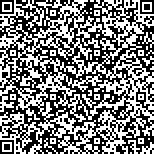下载中心
优秀审稿专家
优秀论文
相关链接
摘要

为研究城市夜间PM2.5质量浓度,利用NPP卫星上可见光红外成像辐射套件(VIIRS)DNB通道的微光辐射数据,以辐射传输理论为基础,建立了夜间城市灯光辐射强度与地面表层PM2.5质量浓度的关系,并基于支持向量机方法建立了夜间城市PM2.5质量浓度反演模型。以北京市作为研究对象,选取2015-03-2015-05期间无月、无云且晴朗夜空条件下4个PM2.5监测站点的微光辐射数据与时空匹配的PM2.5质量浓度数据对模型进行验证。研究结果表明:夜间城市灯光辐射强度与地面表层PM2.5质量浓度呈现负相关性,相关系数最高的定陵站点达到-0.83。基于支持向量机方法建立的PM2.5反演模型获得的PM2.5质量浓度与实际PM2.5质量浓度的相关系数达到0.95,反演结果较优,为进一步大范围监测PM2.5质量浓度空间分布以及改善城市夜间空气质量状况评估方法提供了可行性参考。
Particulate matter with an aerodynamic diameter of less than 2.5 μm (PM2.5) can be transmitted for long distances and remain in the air for a long period of time, which can cause haze pollution. The accurate monitoring of PM2.5 mass concentration, especially nighttime PM2.5 mass concentration, has notable significance in ambient air quality, traffic safety, and human health. This study focuses on monitoring PM2.5 based on radiative transfer theory by utilizing nighttime radiance data collected by the Day/Night Band (DNB) of the Visible Infrared Imaging Radiometer Suite (VIIRS) aboard the Suomi National Polar-orbiting Partnership satellite. Moonlight and artificial lights are the major sources of visible light at night. Nighttime city light imagery has certain instruction ability to ambient air quality. This study adopts the Support Vector Machine (SVM) method to establish the PM2.5 mass concentration inversion model. Nighttime city light intensity was selected as the input parameters for the SVM model. Spatially and temporally paired surface PM2.5 data was selected as the output parameter. This study focuses on the moonless and cloudless nights in Beijing, China from March 2015 to May 2015. First, the contrast of the DNB images qualitatively shows that the DNB imagery is sensitive to the PM2.5 changes at night. Starting from the Beer's law, this study then establishes a link between the nighttime surface PM2.5 mass concentration and the city light intensity radiance measured by the DNB. Second, the correlation coefficient between PM2.5_rh/μ and ln(I) is calculated at each PM2.5 site following the link. Results show a negative correlation, with the largest correlation reaching -0.83 at the Dingling site. This scenario reflects a higher PM2.5 mass concentration in the surface air, and the city light radiance attenuates more in the atmospheric transmission path. Finally, the cross validation of the SVM model shows a linear correlation of 0.95 with respect to the corresponding surface observation PM2.5 mass concentration and a best-fit equation of y=0.98x-1.82. The average absolute deviation of the SVM model and observed values is 4.89 μg·m-3, whereas the least absolute deviation is only 0.58 μg·m-3. Most of the relative deviation is less than 10%, and the minimum relative deviation is only 0.25%. Furthermore, a statistical analysis illustrates the surface PM2.5 mass concentration at the VIIRS night overpass (~2:00 AM in Beijing) time is representative of the daily-mean PM2.5 during the 3-month period. This study provides a feasible method of PM2.5 inversion utilizing DNB nighttime data. The study results indicate the accuracy of the SVM model. This model is largely significant in further filling the temporal and spatial gaps of nighttime PM2.5 monitoring, which can significantly advance the research on PM2.5 effects on the weather, environment, and human health.

